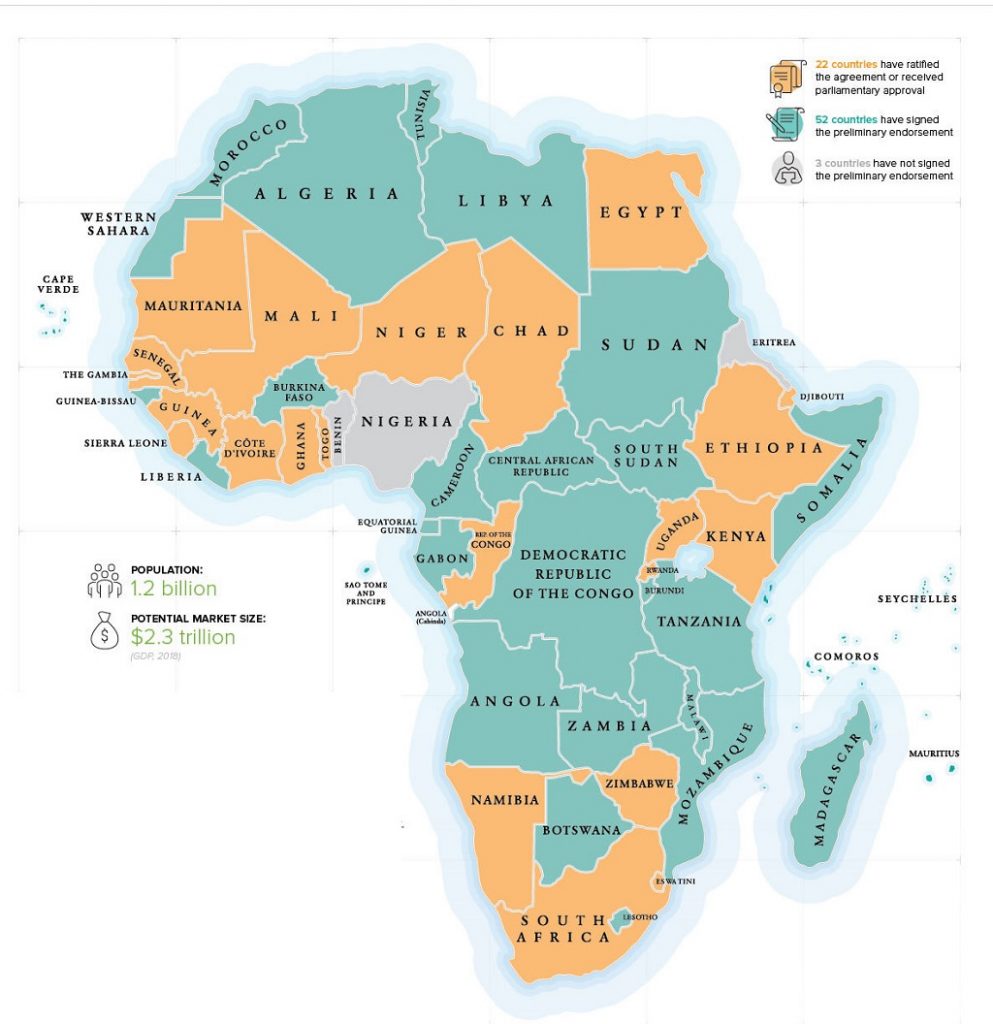The low level of engagement between African leaders and Pakistan has seen trade stagnate at US$3 billion per year from 2012-13 to 2016-17.
With only a marginal increase to US$ 4.6 billion in 2018-19 and with hopes to grow trade, Pakistan’s Ministry of Commerce launched the “Look Africa Initiative”, which envisaged various measures to enhance trade with Africa.
In 2019, the South Asian country’s Ministry of Commerce relocated six Commercial Sections from Europe to Africa taking the total number to ten, to cover the top ten economies of Africa.
As of 2018, trade between Pakistan and Africa stood at US$3.6 billion with Pakistan exporting a volume of US$1.4 billion while importing a volume of US$ 2.2 billion from Africa.
Pakistan imports cotton and textile products, crude oil, iron, tea, coffee, steel and inorganic chemicals from Africa. In return, Africa gets textile products, cotton, cereals, paper products and sugar.
Interestingly, as a country, it seems that Pakistan has an edge over Africa going by the cumulative trade volumes for each. And, it is not the only one.
Continent negotiating trade with individual countries
Sometimes confusion reigns when it comes to negotiating deals between African countries and the so-called developed nations.
In mid-January 2020, 16 African heads of state were in Europe for the UK-Africa Investment Summit. On face value, it is a good plan with many deals signed for Africa. But do these deals have an impact for the majority poor who need empowering the most in each individual African country?
Again, each country in Africa is governed differently. So, why is a continent of 54 countries and more than a billion people negotiating with individual countries for trade?
To those who may not understand the dynamics, what this shows is that the African countries are yet to mature or gain the confidence to negotiate deals with other countries outside the continent.
At the UK-Africa Investment Summit, for instance, AfDB President Dr Akinwumi Adesina said that there are US$8 trillion of assets under management in London, but only 1 per cent is invested in Africa. This shows that despite the promising environment and future that Africa has, trade imbalance continues.
“The issue of risk in Africa is exaggerated. The risk of loss is lower than in Latin America. Yet, funds are not being channelled into Africa,” Adesina added.
Many other countries are negotiating trade with Africa in a way that makes it appear like the continent is treated like a country despite the many different opportunities offered by the various countries.
China, Russia, Japan, India and Turkey all have African summits but seemingly, China has made headway where many others are yet to chart paths.
Already, China is controlling large swathes of the continent with development projects which are opening up individual countries while connecting them to each other and opening up trade routes that foreign aid has not managed to for decades.
But, all this could be due to the fact that up and until last year, there was no unified approach to doing business for the continent. However, the AfCFTA has come to address these issues where African countries negotiate trade deals as a block and not as individual countries.
Pakistan-Africa trade
During the opening of the Pakistan-Africa trade and development conference, President Uhuru Kenyatta said Africa made history last year by establishing the African Continental Free Trade Area (AfCFTA) which creates a market of over 1.2 billion people with an income of about US$3 trillion.
By being the largest free trade area since the establishment of the WTO in 1994, AfCFTA presents a unique platform for investors to engage Africa as a bloc thereby benefiting from economies of scale.
“Stronger bonds will be built under a single trading platform of the African Continental Free Trade Area framework, on which all third parties shall engage Africa on matters trade and investment,” the President said.
Pakistan’s current key trading partners are mainly developed countries and its neighbours and so for the country to look to Africa, there are immense opportunities for the continent.
The summit in Nairobi is expected to help revive the historical trading corridor across the Indian Ocean.
Pakistan is the world’s 33rd-largest country, spanning 881,913 square kilometres. It is also the world’s fifth-most populous country with a population of more than 212.7 million people.
With these numbers, the country offers immense opportunities for Africa since Pakistan is the 68th largest export economy in the world.
In 2017, Pakistan exported US$24.8B and imported US$55.6B, resulting in a negative trade balance of US$30.9B, according to the OEC.
The country which borders Iran, Afghanistan, India and China by land and Oman by sea has China (US$15.2B), the United Arab Emirates (US$6.95B), Saudi Arabia (US$2.53B), Indonesia (US$2.46B) and Japan (US$2.37B) as the top import origins.
OEC notes that the United States, Germany, China, the United Kingdom and Afghanistan are Pakistan’s top export destinations.
